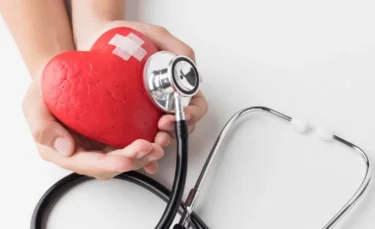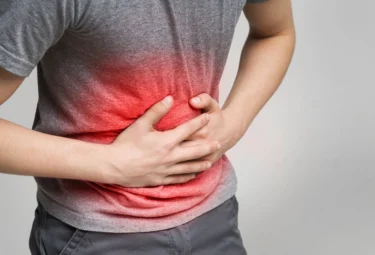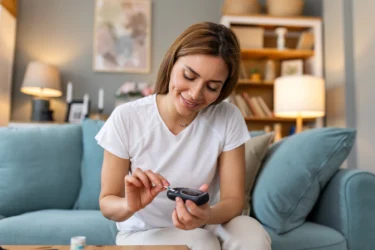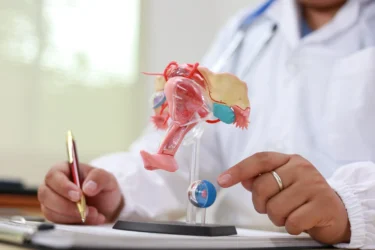Benefits of Balasana (Child’s Pose) and How to Do it By Dr. Ankit Sankhe
By Dr. Ankit Sankhe +2 more

Get,

to manage your symptom
Get your,


4 Cr+ families
benefitted

OTP sent to 9988776655



You’ve successfully subscribed to receive
doctor-approved tips on
Whatsapp

Get ready to feel your best.

Hi There,
Download the PharmEasy App now!!


Register to Avail the Offer
Send OTPBy continuing, you agree with our Privacy Policy and Terms and Conditions

Hi There,
Sign up on PharmEasy now!!
Trusted by 4 crore+ families

OTP sent to 9988776655



You have unlocked 25% off on medicines




Code: NU25
By Dr. Ankit Sankhe +2 more
Table of Contents
Asanas and Pranayama assist individuals in connecting their mind and body. Yoga promotes circulation and muscle tone while lowering blood pressure and heart rate. Practising yoga might help regulate stress levels and reduce tension before exams. Yoga is a practical discipline that combines a wide range of practices to promote a state of both physical and mental health. It involves practising meditation, controlling breathing with a range of breathing techniques, and engaging in various physical postures and exercises where the emphasis is more on engaging particular muscle groups.
Balasana is a simple relaxation pose. Balasana is meant to calm the mind when the breath is regulated correctly. Child’s Pose or Balasana is an easy posture that helps relax the body, which we can do easily1.

Balasana is also termed as a Child’s Pose or Resting pose. In Sanskrit, “Bala” means a “Kid” who is not entirely grown or matured. Balasana resembles a kid on the ground asking for a toy. In balasana, muscles such as spinal extensors, gluteus medius, and hamstrings may elongate and work simultaneously2. Let’s see how balasana is performed.
We must use the proper techniques to get the most health benefits from the child pose. The balasana steps may be done while sitting on the ground as it is a ‘sitting posture’. The steps are as follows:
There is a sense of relaxation that surrounds the innocence of childhood. So, this pose may be known as Child’s pose. However, some great sayings and fun facts regarding balasana are:
Some of the benefits of Balasana are as follows:

According to study3, in Balasana, Marjasana and Setu Bandhasana postures, the oxygen concentration in blood was calculated, among which ‘balasana’ was most beneficial. It may be helpful in treating chest pain and neck pain. Balasana is a relaxed position to enable focus on breathing, which might be a perfect remedy for breathing problems. A deeper inhalation is possible with greater movement in the rib cage and the back of the abdomen.

In the work-from-home schedule, we have to sit for long hours to complete the work, which may cause back pain, and we tend to get sick earlier than usual, for which the balasana yoga pose is a practical exercise. In addition, the spinal, back and hip muscles may lengthen and contract simultaneously while doing balasana, which relieves the body fatigue2.

According to a study1, heart rate, systolic blood pressure, and diastolic blood pressure, are all considerably lowered. Kindly consult a doctor as heart conditions are serious and must be properly diagnosed and treated.

In balasana, upper and lower abdominal portions extend along with lower back muscles, which may benefit patients with stomach pain and lower back pain2.
Regularly practising balasana might improve digestive health. This is because while performing balasana, internal abdominal organs experience pressure. Additionally, it might also help with acidity6.
Dr. Rajeev Singh, BAMS

One of the primary causes of diabetes is stress. It stimulates the body’s release of glucagon (a hormone responsible for boosting blood glucose levels). Yoga poses like balasana along with a few minutes of regular meditation may help relieve stress and protect the body from its harmful effects, reducing the quantity of glucagon and improving insulin (a hormone which balances blood glucose/sugar level in the body) activity5. Kindly consult the doctor for proper diagnosis and treatment of diabetes.

Balasana or resting pose has therapeutic benefits for anxiety, stress, depression, sleeping difficulties and fatigue. This asana may activate the limbic system which helps the body respond to intense emotions such as fear and anger by activating the fight or flight response. It may induce relaxation and relieve tension. It increases blood circulation to the head3.
Practising balasana can give you awareness about mental, emotional, and physical states and bring you solace. It positively affects the whole body, mind, and soul, making you feel rejuvenated and relaxed6.
Dr. Siddharth Gupta, B.A.M.S, M.D (Ayu)

Yoga practice may help develop the mind and body; however, it is still not an alternative to modern medicine. You must not rely on yoga alone to treat any condition. Please consult a qualified doctor who will be able to assess your condition correctly and advise accordingly. Moreover, it is necessary to practice and learn yoga under the supervision of a trained yoga teacher to avoid any injuries.
Also Read: Benefits of Savasana (Corpse Pose) and How to Do it By Dr. Ankit Sankhe
With the guidance of a qualified and experienced yoga teacher, we can access and analyse the risk factors and continue to practise the balasana with precautions.
Also Read: Benefits of Mandukasana (Frog Pose) and How to Do it By Dr. Himani Bisht
The key aim of balasana asana is to regulate our breath consistently that it becomes therapeutic to the body. While performing the balasana, the head should be lowered to the floor while kneeling and keeping the legs apart. We may feel a slight pull in the lower back and inner thigh muscles, but remaining in this position helps regulate breathing and increases oxygen intake in the lungs and blood. In addition, it gently stretches your lower back, ankles, knees and hips. To avoid any problems, one must perform this posture frequently while taking the necessary precautions, preferably with the guidance of a qualified yoga instructor.
Also Read: Benefits of Ardha Matsyendrasana (Half Fish Pose) and How to Do it By Dr. Himani Bisht
No, since more study on the effects of balasana on eyesight is needed.
No, however, more research is required to get the correct information on the balasana effect on hair growth.
Balasana improves the digestion process. It may focus on the purification of body and mind to help overcome a variety of illnesses in modern life. In addition, balasana may be effective for lower back and neck pain patients2.
Daily yoga may increase lung airflow, capacity, stamina, and efficiency. In addition, a back-bending position like balasana may stretch the chest and enhance lung and heart function and blood circulation. In the resting pose, muscles in the hips, arms, and legs help the body react rapidly and breathe more deeply. The blood flow through the muscles, and back to the lungs increases, the heart beats more quickly, and tiny blood vessels widen to allow more oxygen to enter the blood. Endorphins (body’s natural pain relievers and mood uplifters) are released by the body together with oxygen. The increase in blood flow encourages blood circulation3.
Balasana may improve digestion process and stretches the abdominal muscles, which helps reduce pain in the stomach. Kindly consult the doctor or yoga trainer before practising the balasana or Child’s pose2.
Disclaimer: The information provided here is for educational/awareness purposes only and is not intended to be a substitute for medical treatment by a healthcare professional and should not be relied upon to diagnose or treat any medical condition. The reader should consult a registered medical practitioner to determine the appropriateness of the information and before consuming any medication. PharmEasy does not provide any guarantee or warranty (express or implied) regarding the accuracy, adequacy, completeness, legality, reliability or usefulness of the information; and disclaims any liability arising thereof.
Links and product recommendations in the information provided here are advertisements of third-party products available on the website. PharmEasy does not make any representation on the accuracy or suitability of such products/services. Advertisements do not influence the editorial decisions or content. The information in this blog is subject to change without notice. The authors and administrators reserve the right to modify, add, or remove content without notification. It is your responsibility to review this disclaimer regularly for any changes.
Comments

Leave your comment...
You may also like
Comments